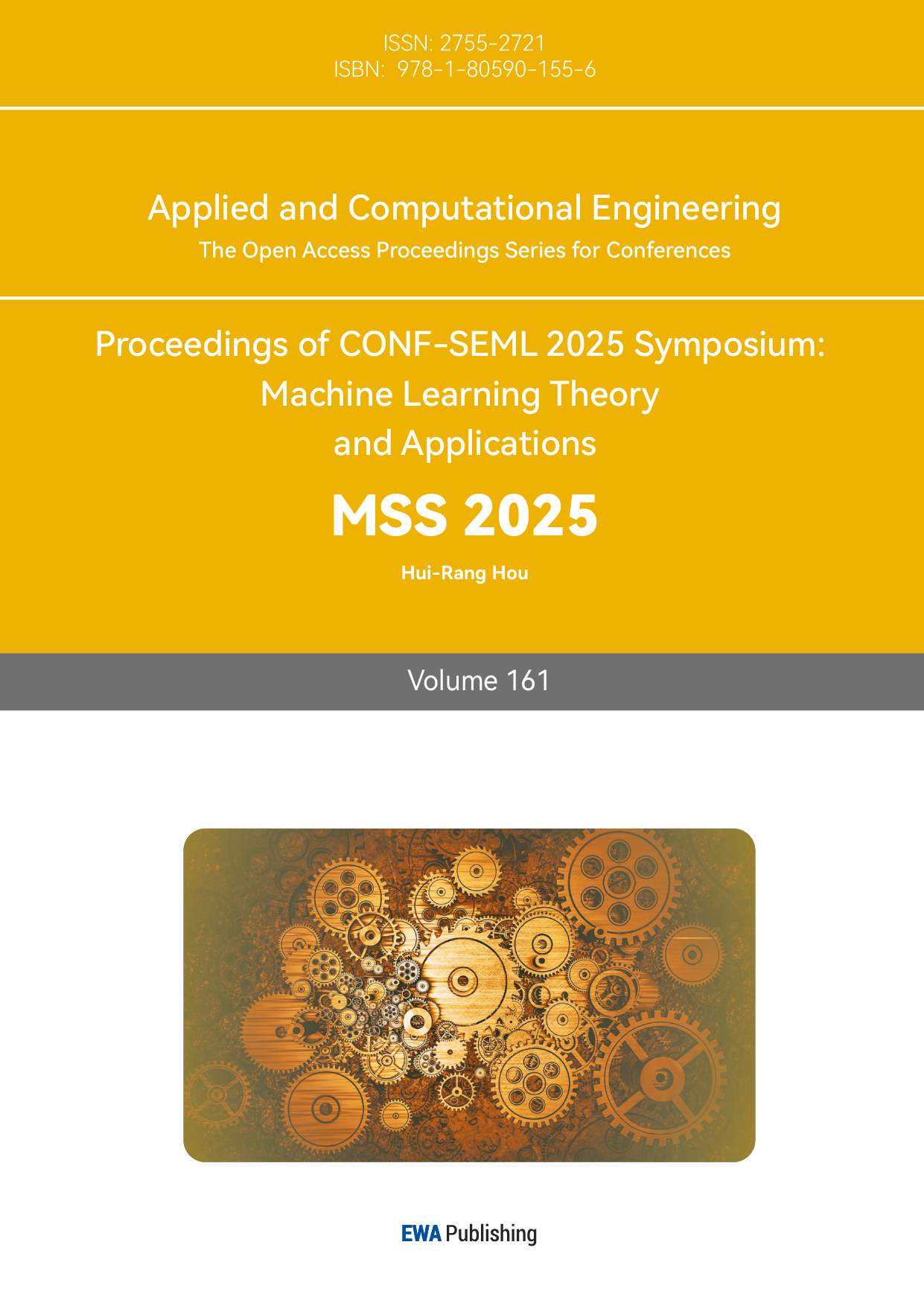References
[1]. Kingma, D. P., Salimans, T., Poole, B., & Ho, J. (2021). Variational Diffusion Models. arXiv preprint arXiv:2107.00630.
[2]. Karras, T., Aittala, M., Hellsten, J., Laine, S., & Lehtinen, J. (2020). Training Generative Adversarial Networks with Limited Data. Advances in Neural Information Processing Systems, 33, 12104–12114.
[3]. Tao, M., Tang, H., Wu, F., Jing, X. Y., Bao, B. K., & Xu, C. (2020). DF-GAN: A Simple and Effective Baseline for Text-to-Image Synthesis. arXiv preprint arXiv:2008.05865.
[4]. Liu, M. Y., Huang, X., Yu, J., Wang, T. C., & Mallya, A. (2020). Generative Adversarial Networks for Image and Video Synthesis: Algorithms and Applications. arXiv preprint arXiv:2008.02793.
[5]. Song, Y., Sohl-Dickstein, J., Kingma, D. P., Kumar, A., Ermon, S., & Poole, B. (2021). Score-Based Generative Modeling through Stochastic Differential Equations. arXiv preprint arXiv:2011.13456.
[6]. Liu, Y., & Zhang, Z. (2020). Diverse Image Generation via Self-Conditioned GANs. Proceedings of the IEEE/CVF Conference on Computer Vision and Pattern Recognition (CVPR), 14286–14295.
[7]. Liu, M., & Wang, Y. (2020). Deep Generative Models for 3D Medical Image Synthesis. arXiv preprint arXiv:2011.01952.
[8]. Zhao, Z., Zhang, Z., Chen, T., Singh, S., & Zhang, H. (2020). Image Augmentations for GAN Training. arXiv preprint arXiv:2006.02595.
[9]. Tian, Y., Krishnan, D., & Isola, P. (2020). Contrastive Representation Distillation. arXiv preprint arXiv:1910.10699.
[10]. Zhang, H., Goodfellow, I., Metaxas, D., & Odena, A. (2020). Self-Attention Generative Adversarial Networks. Proceedings of the 36th International Conference on Machine Learning, 7354–7363.
Cite this article
Chai,K. (2025). Combining Deep Generative Models with Generalized Linear Models for Image Generation and Repair Systems: Transitioning from Statistical Modeling to Deep Learning. Applied and Computational Engineering,161,24-29.
Data availability
The datasets used and/or analyzed during the current study will be available from the authors upon reasonable request.
Disclaimer/Publisher's Note
The statements, opinions and data contained in all publications are solely those of the individual author(s) and contributor(s) and not of EWA Publishing and/or the editor(s). EWA Publishing and/or the editor(s) disclaim responsibility for any injury to people or property resulting from any ideas, methods, instructions or products referred to in the content.
About volume
Volume title: Proceedings of CONF-MSS 2025 Symposium: Automation and Smart Technologies in Petroleum Engineering
© 2024 by the author(s). Licensee EWA Publishing, Oxford, UK. This article is an open access article distributed under the terms and
conditions of the Creative Commons Attribution (CC BY) license. Authors who
publish this series agree to the following terms:
1. Authors retain copyright and grant the series right of first publication with the work simultaneously licensed under a Creative Commons
Attribution License that allows others to share the work with an acknowledgment of the work's authorship and initial publication in this
series.
2. Authors are able to enter into separate, additional contractual arrangements for the non-exclusive distribution of the series's published
version of the work (e.g., post it to an institutional repository or publish it in a book), with an acknowledgment of its initial
publication in this series.
3. Authors are permitted and encouraged to post their work online (e.g., in institutional repositories or on their website) prior to and
during the submission process, as it can lead to productive exchanges, as well as earlier and greater citation of published work (See
Open access policy for details).
References
[1]. Kingma, D. P., Salimans, T., Poole, B., & Ho, J. (2021). Variational Diffusion Models. arXiv preprint arXiv:2107.00630.
[2]. Karras, T., Aittala, M., Hellsten, J., Laine, S., & Lehtinen, J. (2020). Training Generative Adversarial Networks with Limited Data. Advances in Neural Information Processing Systems, 33, 12104–12114.
[3]. Tao, M., Tang, H., Wu, F., Jing, X. Y., Bao, B. K., & Xu, C. (2020). DF-GAN: A Simple and Effective Baseline for Text-to-Image Synthesis. arXiv preprint arXiv:2008.05865.
[4]. Liu, M. Y., Huang, X., Yu, J., Wang, T. C., & Mallya, A. (2020). Generative Adversarial Networks for Image and Video Synthesis: Algorithms and Applications. arXiv preprint arXiv:2008.02793.
[5]. Song, Y., Sohl-Dickstein, J., Kingma, D. P., Kumar, A., Ermon, S., & Poole, B. (2021). Score-Based Generative Modeling through Stochastic Differential Equations. arXiv preprint arXiv:2011.13456.
[6]. Liu, Y., & Zhang, Z. (2020). Diverse Image Generation via Self-Conditioned GANs. Proceedings of the IEEE/CVF Conference on Computer Vision and Pattern Recognition (CVPR), 14286–14295.
[7]. Liu, M., & Wang, Y. (2020). Deep Generative Models for 3D Medical Image Synthesis. arXiv preprint arXiv:2011.01952.
[8]. Zhao, Z., Zhang, Z., Chen, T., Singh, S., & Zhang, H. (2020). Image Augmentations for GAN Training. arXiv preprint arXiv:2006.02595.
[9]. Tian, Y., Krishnan, D., & Isola, P. (2020). Contrastive Representation Distillation. arXiv preprint arXiv:1910.10699.
[10]. Zhang, H., Goodfellow, I., Metaxas, D., & Odena, A. (2020). Self-Attention Generative Adversarial Networks. Proceedings of the 36th International Conference on Machine Learning, 7354–7363.









